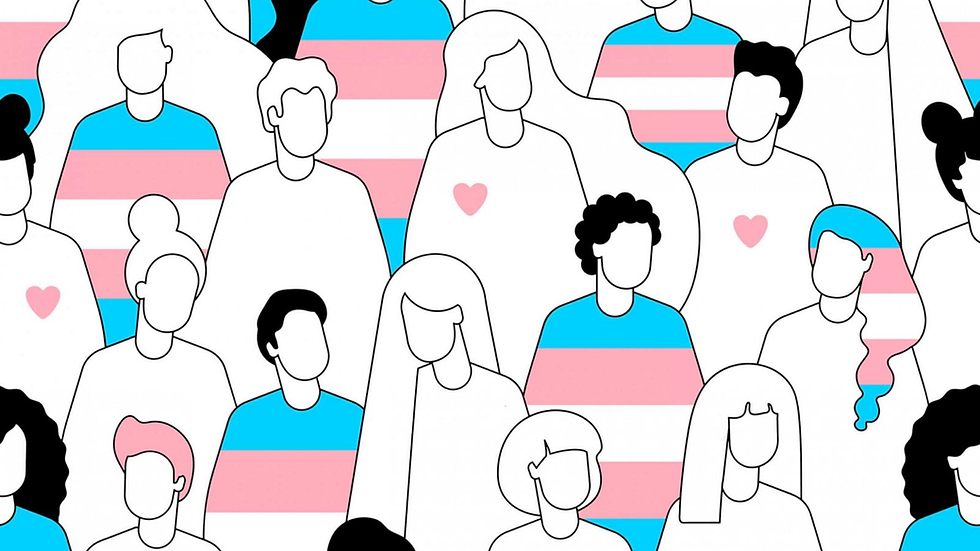
Trans issues are at the center of political discourse today. In the background of the culture wars consuming the West, questions like ‘What is a woman?’ and ‘Are children able to consent to sex transition?’ have become loaded with political controversy. This has led to increased interest in the phenomenon of transsexuality among researchers and policymakers. This essay will attempt to explain gender incongruence- the condition in which one’s gender identity does not conform to their assigned sex and discuss its potential causes.
As with previous articles, I’d like to begin by introducing my readers to some basic terms that will be used in the following discussion. Sex refers to the biological characteristics on account of which one is assigned male or female at birth. This includes things like sexual anatomy or genotype. In contrast, gender is a social phenomenon- it refers to the roles and behaviors which we associate as being archetypically masculine or feminine. Finally, gender identity refers to one’s internal sense of belonging to a particular gender or sex category.
Although we are yet to find the precise cause of gender incongruence, researchers believe that it is an emergent effect of a combination of genetic and environmental factors. Milton Diamond, the sex researcher who became famous for bringing the David Reimer case to public attention, published a review that indicated that among identical twins in which one twin identified as transgender, there was a 20% chance that the other one would become transgender as well. Identical twin studies are incredibly useful to psychological research because they demonstrate the extent to which a trait is hereditary. Additional studies reveal that transwomen possess a longer version of the NR3C4 gene which plays an important role in male sexual development. However, we must remember that genetic factors only tell part of the story. As the remaining 80% of twins in Diamond's study indicate, environmental factors also have to be taken into consideration.
Some scientists speculate on the influence of prenatal androgen. Their hypothesis is simple. Owing to exposure to abnormal amounts of testosterone in the prenatal environment, transgender children develop brain structures akin to that of the opposite sex, which accounts for their atypical preferences and identity. This theory has its merits. For one, we have data that suggests a correlation between atypical gender interests and prenatal androgen. Girls diagnosed with congenital adrenal hyperplasia sometimes develop typical male preferences regarding toys and clothes. Moreover, they are less likely to identify as exclusively heterosexual in their adult life. Secondly, transgender individuals exhibit brain anatomy which resembles that of the opposite sex. For instance, the neuron density of the bed nucleus of the stria terminalis (a part of the thalamus), is more or less the same in transwomen and biological women. Similar patterns in size and structure have also been observed in other regions of the brain.
Finally, we have to discuss the influence of socialization. From birth, children are socialized into the norms and expectations associated with their assigned sex, through interactions with parents, family members, peers, and other social agents, who reinforce gender-specific behaviors and roles. According to Gender Schema Theory, children actively acquire information about gender roles and stereotypes from their cultural environment. They develop schemas or mental frameworks that organize their understanding of what it means to be male or female. These schemas then influence their behavior and self-concept.
But for some reason, transgender individuals develop self-concepts that are in direct conflict with their assigned gender. For years, theorists like John Money had proposed that gender identity was merely the product of upbringing. If you raised a male child as a girl, then they would gradually adjust to their imposed identity. The tragic example of David Reimer however proves that gender identity is something more than just learned behaviour- it reflects something that is innate.
In recent years, the influence of social factors has re-entered the transgender etiology debate with speculations regarding the validity of the controversial and disputed rapid onset gender dysphoria hypothesis, which proposes peer influence and social contagion to account for a massive uptick in the number of adolescent girls seeking gender-affirming care. Moreover, significant debate lingers on the issue of the persistence of gender dysphoria into later teenage years. These issues will be discussed in later articles.
References:
Boskey, E. (2023, June 22). Rapid-Onset Gender Dysphoria: What to Understand. Verywell Health. Retrieved July 26, 2023, from https://www.verywellhealth.com/rapid-onset-gender-dysphoria-4685597
Diamond, M. (2013). Transsexuality among twins: identity concordance, transition, rearing, and orientation. International Journal of Transgenderism, 14(1), 24-38.
Hare, L., Bernard, P., Sánchez, F. J., Baird, P. N., Vilain, E., Kennedy, T., & Harley, V. R. (2009). Androgen receptor repeat length polymorphism associated with male-to-female transsexualism. Biological psychiatry, 65(1), 93–96. https://doi.org/10.1016/j.biopsych.2008.08.033
Hines M. (2011). Prenatal endocrine influences on sexual orientation and on sexually differentiated childhood behavior. Frontiers in neuroendocrinology, 32(2), 170–182. https://doi.org/10.1016/j.yfrne.2011.02.006
Comments